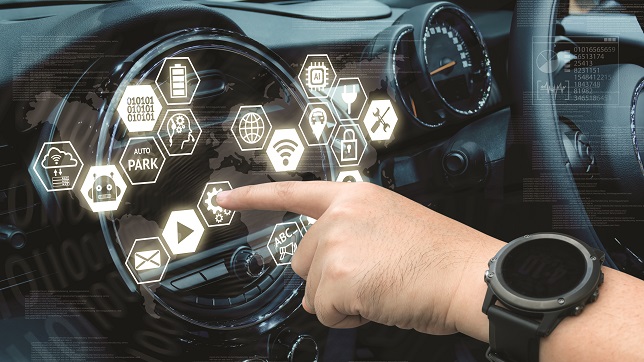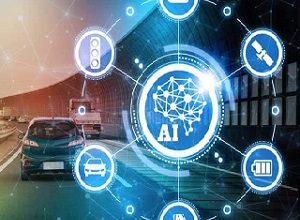Usage and familiarity with in-vehicle infotainment

In early 2010s automakers had started equipping high end variants of luxury vehicles with infotainment panels. Over the last few years we have seen more and more variant option coming with infotainment panel. In 2015, Android Auto was the Mahindra XUV500. Apple CarPlay came after some time. Maruti Suzuki’s Baleno featured Android Auto as well as Apple CarPlay. Even today, market is being driving more from the push, rather than need based pull. Though some of the features are already benefiting a big segment of users- like navigation, traffic condition and updates etc., but the connected smart phones are fulfilling the purpose.
Features like navigation, human-machine interface, advanced music system, internet connectivity will continue to change the way consumer perceive about the innovative features related to infotainment in cars. Demand for IVI is accelerating and the industry has to have strategic tie-ups with companies who would help them to have the competitive advantage.
In-Vehicle Infotainment industry is still in its development stage in India. The growing urban population is seen as a factor which could increase the market for IVI. Many international players have invested in developing innovative infotainment features for Indian cars.
Study Area & Group
We Telematics Wire carried out a study to gauge the awareness amongst the people about infotainment and its benefits. It examines awareness of consumers on the basis of age group across less than 25 years, 25 – 45 years, 45 – 65 years and 65 years above, based on occupation students, service/business and homemakers and geographical region. The geographic area of response is a region in northern India, covering Western Uttar Pradesh, Delhi NCR and Haryana. Data was collected with the help of a questionnaire circulated amongst the respondents using Google Sheet.
The age group between 25-45, most vibrant group of society, indeed has responded most for survey, which shows high interest in technological development in automotive sector (fig 1).

Car Brands in the race
There is some popular vehicle make in the geographical area we covered. There is also a trend towards feature rich and newer types of vehicles. In the below graph, it seems large section from this region travel in Maruti, Hyundai, Tata Motors, and Mahindra cars. Respondents were allowed to mention the car brand which they generally travel in.

Awareness of infotainment regional view
In this region, more than 80% of the people are aware that music system is being replaced by in – vehicle infotainment system (Fig 3). But still many people used music system term in place of “infotainment”, when they go to buy a new car.

Infotainment Feature Awareness
The general information shared with the respondent included brief introduction to the “info” and “tainment”. That, the “info” in infotainment, refers to all car-related information, like battery voltage, tyre pressure and oil pressure, and is supposed to help the driver understand their car’s current status, including speed and remaining fuel and vehicle navigation. Here except for vehicle navigation most of the feature people are not aware of and is not being available in majority of vehicles. The “tainment” in infotainment, refers to entertainment, includes all functions which entertain the driver while driving. This involves audio, from a radio (AM/FM) or a CD and videos or games from a DVD or even streamed online, are being used. But mostly it is either FM or USB pen drive and in some cases apps.
In the fig 4 it can be seen that the awareness about the features of in-vehicle infotainment is high. News and updates are found to be most commonly used by the people among the features followed by music and navigation (fig 5).
In fig 6 it can be seen that other features that could be in-vehicle infotainment system, people preferred payments for parking and fuel, vehicle health monitoring. They also would like to have reminders about insurance and other related services like service alert.



Infotainment in Shared Mobility
Shared mobility players like Ola and Uber also have introduced – infotainment panel for a segment of users/passengers. The console for the passengers include entertainment options such as movies, trailers, and TV shows, information and features that are linked to your destination, a web browser and connectivity with certain apps such as Apple Music, Sony LIV streaming app, Audio Compass and Spotify.
As per the study, in the northern region most of the people are aware about infotainment system in cabs (fig 7). Music and navigation are the commonly used features by the passengers (fig 8).


Conclusion
The infotainment panel is more or less seen as music system but in place of music console it is touch screen driven. That there are many other features which could help them manage their vehicle is either not been understood or is being downplayed by the car makers. If we look at the OBD II, which was mandated from 1st April 2013, but even today, except for the exceptional situation, the car maintenance is based on the kilometers driven rather than how the vehicle is or its health. The ‘info’ part of the infotainment could disrupt the business model of the car sales. The dealers/sellers which make more or comparable money on car service than the actual sale of car, seems sceptical about making the end users fully aware of the “info” part, as it may dent after sales paid service revenue. There is a need to create awareness through campaign about the benefits these new components will bring to the society at large.
Author:

Richa Tyagi
Editorial Team Member
Telematics Wire
Published in Telematics Wire

